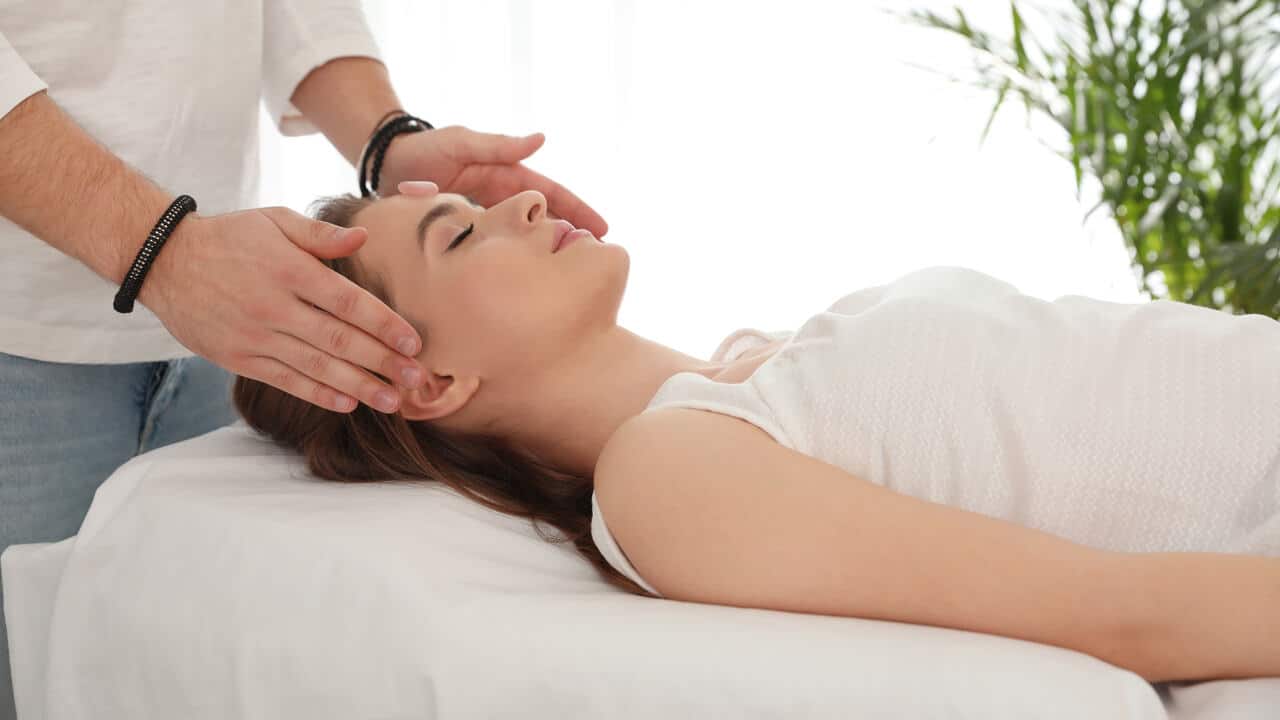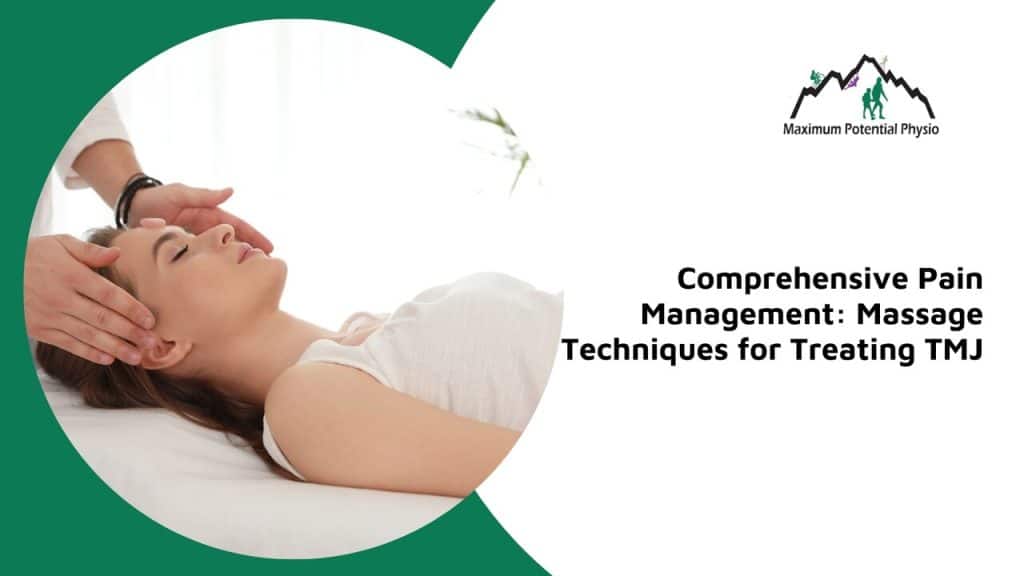Comprehensive Pain Management: Massage Techniques for Treating TMJ

Temporomandibular joint (TMJ) disorder is a common condition that affects the jaw joint and surrounding muscles, leading to pain, discomfort, and difficulties with basic functions such as chewing and speaking. If left untreated, TMJ disorder can severely impact your quality of life. One effective approach to managing TMJ pain and improving jaw function is massage therapy. In this blog post, we will explore what TMJ disorder is, how massage therapy can provide relief, and the specific techniques used by massage therapists to target TMJ-related muscles.
What Is TMJ Disorder?
TMJ disorder refers to a group of conditions that affect the temporomandibular joint, which connects the lower jaw to the skull, just in front of the ear. This joint is responsible for the movements required for chewing, speaking, and other jaw functions. When the TMJ becomes inflamed, misaligned, or otherwise dysfunctional, it can lead to a variety of symptoms, including:
- Jaw Pain: One of the most common symptoms, jaw pain can range from mild discomfort to severe pain that radiates to the neck, shoulders, and face.
- Difficulty Opening and Closing the Mouth: People with TMJ disorder often experience limited range of motion in the jaw, making it difficult to open or close the mouth fully.
- Clicking or Popping Sounds: TMJ disorder can cause clicking, popping, or grating sounds when moving the jaw, particularly when chewing or yawning.
- Headaches and Ear Pain: Due to the proximity of the TMJ to the ear and head, TMJ disorder can lead to frequent headaches, earaches, or a feeling of fullness in the ears.
- Facial Pain: The muscles around the jaw, cheeks, and temples may become sore and tender, contributing to overall facial pain.
The exact cause of TMJ disorder is often difficult to pinpoint, but it can be related to factors such as jaw misalignment, teeth grinding (bruxism), arthritis, stress, or injury to the jaw.
Massage Techniques Used to Address TMJ
When treating TMJ disorder, massage therapists use specific techniques to target the muscles and tissues involved in jaw movement. Here are some key techniques:
- Intra-Oral Massage: This technique involves massaging the muscles inside the mouth to release tension and improve jaw mobility. It’s effective for reaching deep-seated areas that contribute to TMJ pain.
- Therapeutic Massage Therapy: This approach combines various techniques to reduce muscle tension and improve tissue health around the jaw, neck, and shoulders. It’s tailored to the individual’s specific TMJ symptoms.
- Deep Tissue Massage: Focused on the deeper muscle layers, deep tissue massage uses firm pressure to release chronic tension and adhesions in the jaw muscles, helping to alleviate TMJ pain.
- Active Release: Active release therapy (ART) combines pressure with guided jaw movement to break down scar tissue and improve flexibility. It’s particularly effective for restoring normal jaw function.
- Relaxation Massage: Aimed at reducing stress-related tension, relaxation massage uses gentle strokes to calm the nervous system and ease muscle tightness in the jaw, helping to relieve TMJ symptoms.
These targeted techniques can significantly relieve TMJ pain and improve jaw function, making them an essential part of TMJ treatment.
Benefits of Massage Therapy for TMJ Pain Relief
Massage therapy is a non-invasive and highly effective treatment option for managing TMJ disorder. Here are some of the key benefits of massage therapy for TMJ pain relief:
- Pain Reduction: One of the primary benefits of massage therapy for TMJ disorder is its ability to reduce pain. By applying pressure to specific muscles and trigger points around the jaw, neck, and shoulders, massage therapy helps release tension and alleviate discomfort. This can lead to immediate relief from the sharp, aching pain often associated with TMJ disorder.
- Improved Jaw Mobility: TMJ disorder often causes stiffness and limited movement in the jaw. Massage therapy helps increase blood flow to the affected muscles, promoting relaxation and improving the range of motion. As a result, you may find it easier to open and close your mouth without pain or restriction.
- Stress Relief: Stress is a common contributor to TMJ disorder, particularly when it leads to habits like teeth grinding or clenching. Massage therapy has a calming effect on the nervous system, helping to reduce overall stress levels and prevent stress-related TMJ flare-ups.
- Decreased Inflammation: Chronic inflammation in the muscles and joints surrounding the TMJ can exacerbate pain and dysfunction. Massage therapy helps stimulate circulation and lymphatic drainage, which can reduce inflammation and promote healing in the affected areas.
- Headache and Neck Pain Relief: Many people with TMJ disorder also experience tension headaches and neck pain due to the interconnectedness of the jaw, neck, and shoulder muscles. By addressing these areas during a massage, therapists can provide relief from these secondary symptoms, improving overall comfort.
- Preventive Care: Regular massage therapy sessions can serve as a preventive measure, helping to maintain muscle health, prevent the buildup of tension, and reduce the likelihood of future TMJ issues. This is particularly beneficial for individuals prone to stress or those who have a history of TMJ disorder.
How Often Should I Get a Massage for TMJ Relief?
The frequency of massage therapy sessions for TMJ relief depends on several factors, including the severity of your symptoms, how you respond to treatment, and your overall health. In the initial treatment phase, especially if you’re experiencing significant pain or dysfunction, more frequent massage sessions—typically once or twice a week—may be necessary. This phase focuses on reducing pain, releasing tension, and improving jaw mobility.
As your symptoms begin to improve, the frequency of sessions can be reduced. You might find that attending massage therapy once every two weeks or once a month is sufficient. During this maintenance phase, the goal is to sustain the progress made during the initial treatment, prevent symptoms from returning, and address any lingering tension or discomfort.
For those who are prone to TMJ issues, ongoing preventive care plays a crucial role in long-term management. Even if your symptoms have resolved, scheduling a massage session every 4 to 6 weeks can help keep your muscles relaxed, reduce stress, and prevent future flare-ups. Regular massage therapy is particularly beneficial for individuals who are susceptible to stress or have a history of teeth grinding or clenching.
Your massage therapist will collaborate with you to develop a treatment plan tailored to your specific needs and goals. It’s important to maintain open communication about your symptoms and any changes you experience, as this will allow your therapist to adjust the treatment plan as needed to ensure the best possible outcome.
Should Massage Therapy for TMJ Be Combined with Other Treatments?
Massage therapy is a powerful treatment for relieving TMJ pain and improving jaw function, but it’s often most effective when combined with other treatments. While massage can reduce muscle tension, decrease inflammation, and enhance mobility, TMJ disorder is complex, with contributing factors like misalignment, stress, or underlying medical issues. A multi-faceted approach is often recommended to address all aspects of the disorder. This might include combining massage therapy with physiotherapy and stress management techniques.
In some cases, specific interventions like orthodontic treatment may be necessary to correct structural issues that massage alone cannot resolve. By incorporating additional treatments such as acupuncture, you can enhance overall outcomes, reduce pain, and improve jaw alignment.
Collaborating with healthcare professionals to create a personalized treatment plan ensures a more comprehensive and effective approach to managing TMJ disorder, providing long-lasting relief.
Self-Massage Techniques to Use at Home for TMJ Relief
There are several self-massage techniques that you can use at home to help manage TMJ pain and discomfort. These techniques are simple to perform and can provide relief between professional massage therapy sessions. Here are a few you can try:
- Masseter Muscle Massage: The masseter muscle is one of the primary muscles involved in jaw movement and is often tight in individuals with TMJ disorder. To massage this muscle, place your fingers on the sides of your jaw, just below your cheekbones. Apply gentle pressure and use small circular motions to massage the muscle. Move your fingers along the length of the muscle, focusing on any areas that feel particularly tight or tender. This massage helps release tension and reduce pain in the jaw.
- Temporalis Muscle Massage: The temporalis muscle is located on the sides of your head, above your ears. To massage this muscle, place your fingertips on your temples and apply gentle pressure. Use circular motions to massage the area, gradually increasing the pressure if comfortable. This massage can help relieve headaches and reduce tension in the jaw.
- Jaw Stretch and Massage: To perform this technique, start by gently opening your mouth as wide as is comfortable. Hold this stretch for a few seconds, then use your fingertips to massage the muscles just below your ears, where the jaw connects to the skull. Apply gentle pressure and use circular motions to massage the area, helping to relax the muscles and improve jaw mobility.
- Neck and Shoulder Massage: Tension in the neck and shoulders can contribute to TMJ pain. To massage these areas, use your fingers or a massage tool to apply pressure to the muscles on the sides and back of your neck. Gently knead the muscles, focusing on areas that feel tight or sore. You can also use your hands to massage your shoulders, using circular motions to release tension.
Note: These techniques are general recommendations and may not be suitable for everyone. Consult with a healthcare professional like a Registered Massage Therapist to ensure they are appropriate for your specific condition and recovery needs.
Say Goodbye to Jaw Pain!
TMJ disorder can be a painful and debilitating condition, but with the right approach to treatment, relief is within reach. Massage therapy offers a non-invasive and effective way to manage TMJ pain, improve jaw function, and enhance overall well-being. By understanding the benefits of massage therapy, the techniques used to target TMJ-related muscles, and the importance of regular treatment, you can take an active role in your recovery and enjoy a better quality of life.
If you’re struggling with TMJ pain, consider incorporating massage therapy into your treatment plan. Maximum Potential Physiotherapy in Calgary NW is here to provide personalized care and treatment to help you find relief and restore normal jaw function. Contact us today to schedule your appointment and we’ll help you find the relief you’ve been looking for!

